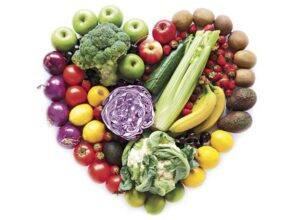Going out to eat but don’t want to overindulge? Learn how to eat healthy at restaurants with this guide filled with helpful tips.
Even the healthiest-sounding dishes at a restaurant can be loaded with sodium, refined sugars and processed foods. In addition, most restaurants are not preparing food with your health in mind but with getting the most bang for the buck. They are not using oils such as coconut or olive oil but are cooking with canola oil and other less expensive oils that not only cause inflammation that leads to various dis-ease states but also may carry contaminants of foods that you are trying to avoid either because of food allergies or food sensitivities.
The first rule of thumb to eating healthy is to prepare your food at home. With some education, this can be easy and fun!
How to eat healthy at restaurants
However, there are those times when preparing your own food is just not an option. Here are some tips to help you navigate restaurant eating:
- Avoid bread baskets, desserts, fruit juices, sodas, mocktails and alcoholic beverages. Enjoy an unsweetened herbal tea after your meal as a treat.
- Eat your veggies. When eating out, this is not an exception. Order two sides of steamed vegetables (sautéed vegetables may be cooked in less than desirable oils but you can request that your vegetables be sautéed in olive oil).
- Salads can be an excellent choice – or can they?
Choose oil-based salad dressings such as balsamic or a simple oil and vinegar and ask for it served on the side. - Avoid cream-based salad dressing which contain dairy and can be loaded with calories.
- Avoid “light” or “non-fat” salad dressings because the fat in these is frequently replaced with salt and sugars to make up for the missing fat and improve their taste.
- Be cautious of soups which may be high in sodium. Most restaurants are not making use of herbs and make up for it by using copious amounts of sodium.
- Choose grilled foods over fried. Besides the risk of contamination from foods that you are trying to avoid, fried foods are often loaded with MSG (monosodium glutamate) which may cause sleep problems, lead to headaches and cause nausea.
- Choose turkey or roast beef from the deli counter. Most deli meats are loaded with sodium and contain preservatives.
- Choose guacamole or salsa over cheeses when eating Mexican foods or ask for avocado instead of cheese on salads. Cheeses are high in sodium and may contain preservatives. Guacamole gives you a dose of healthy fats and salsas can help you load up on veggies. Be sure to ask if the guacamole and salsas are low sodium.
- Request a smaller portion or, if that is not possible, request that at least half your protein be put in a doggie bag before your food even arrives at your table so that you are not tempted. Portion sizes at restaurants are much larger than we would consume at home.
- Remember that YOU are the customer. If you don’t see something on the menu, or better yet, don’t even look at the menu, just ask for simple foods – steamed vegetables and grilled proteins.
- Slow down! Consuming a meal is as much about the experience as it is about the food. Take the time to connect with your food and your companions during a meal. Chew your food until it is liquid and limit the amount of liquids that you take in during a meal. Hydration should occur between meals. And, remember, what you do not eat, you can take home to enjoy later.
- In summary, focus on salads, vegetables, broth soups and animal proteins. Ditch the flour. For example, instead of a burrito, go for a burrito bowl.
- Finally, research any restaurant in advance and plan what you are having so that you are not tempted by the menu.







